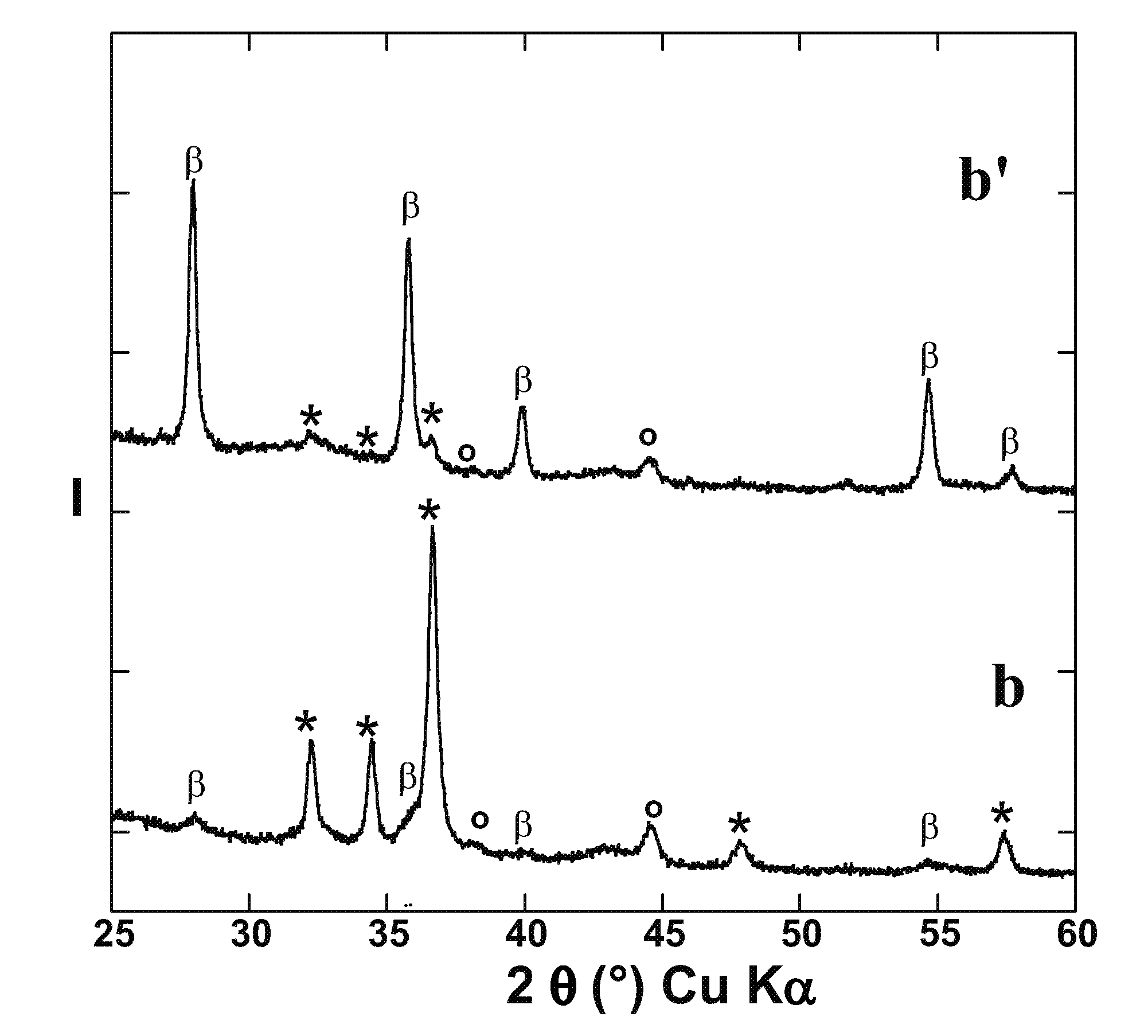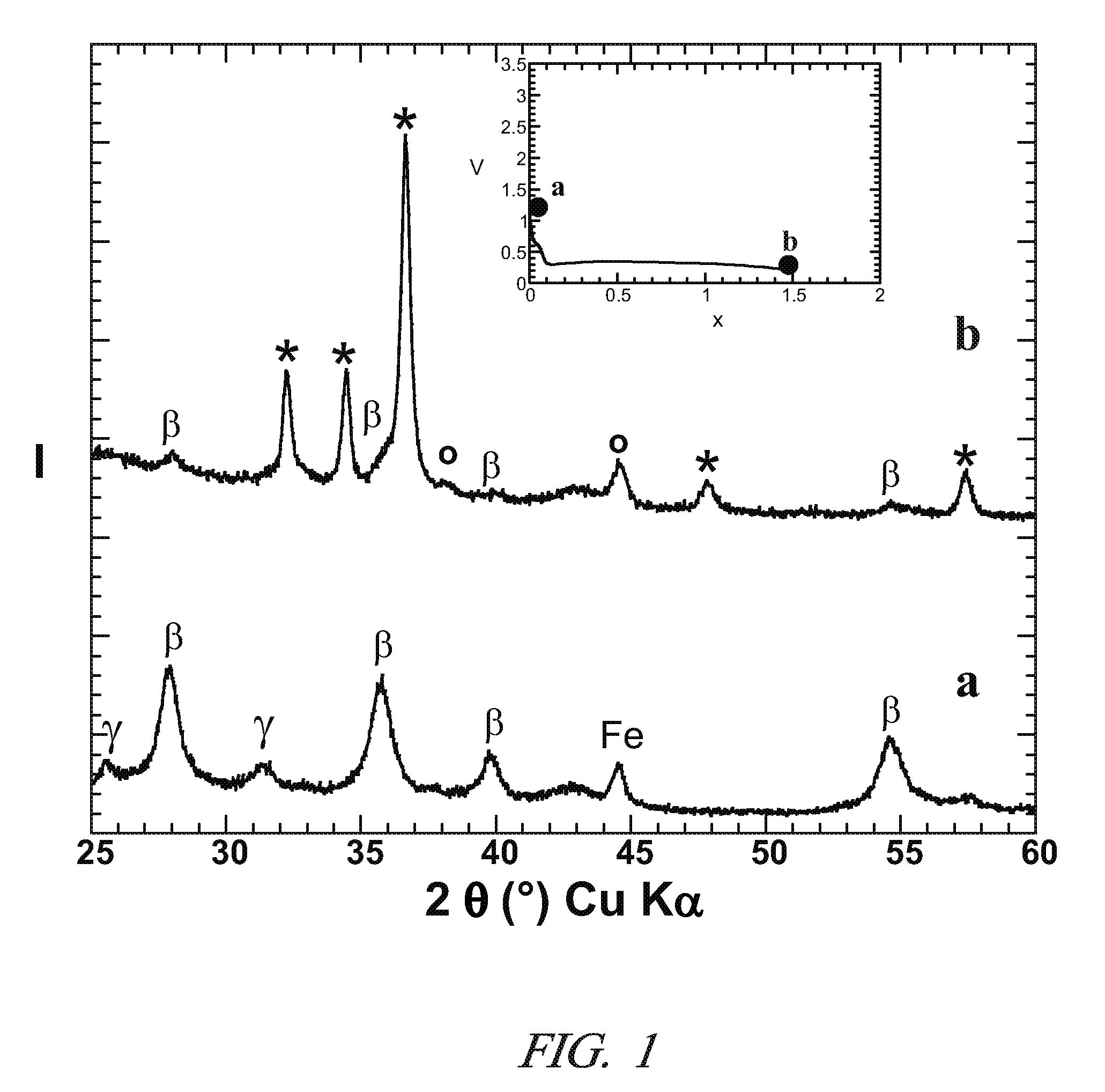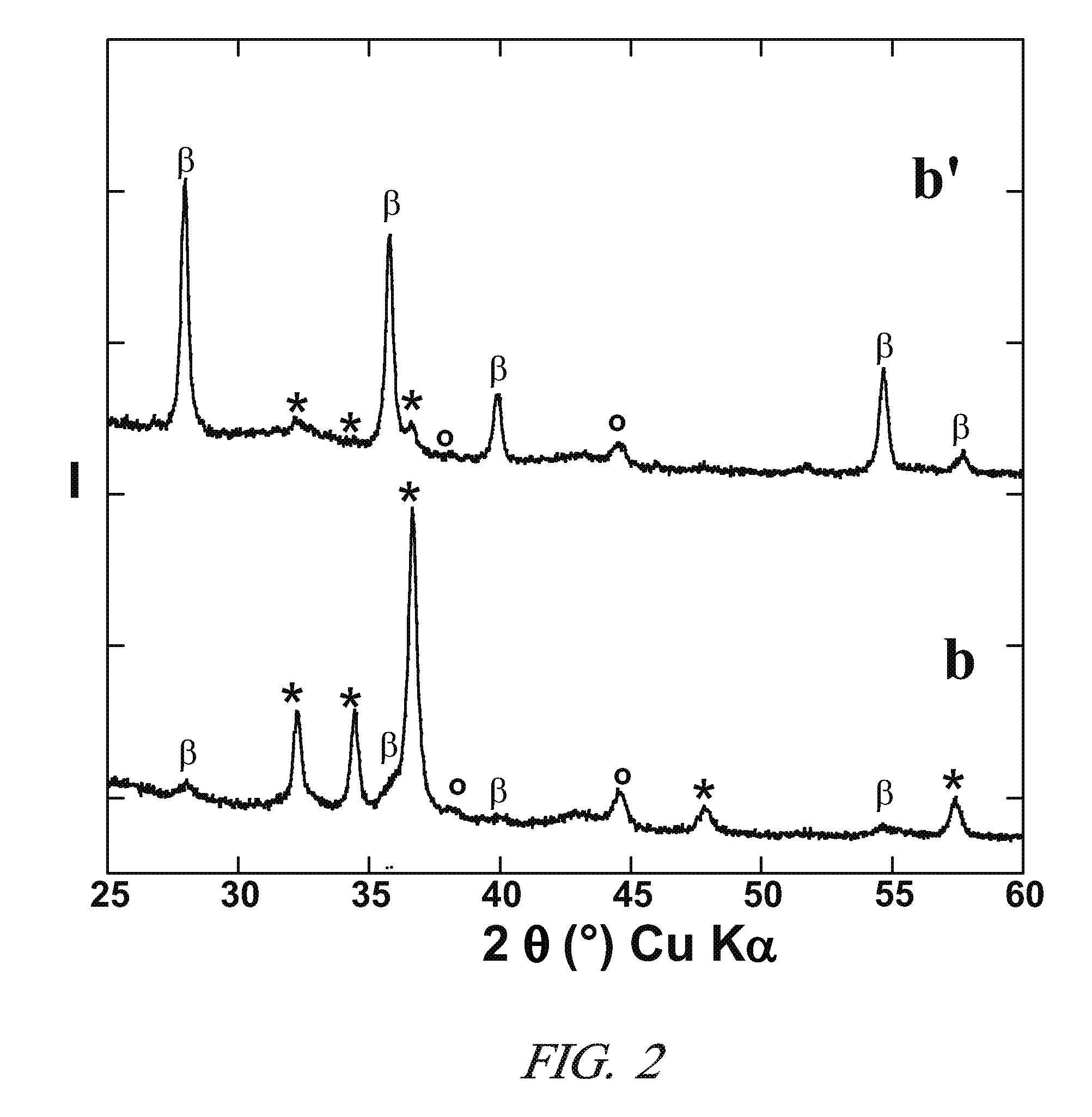Preparation of hydrogen storage materials
- Summary
- Abstract
- Description
- Claims
- Application Information
AI Technical Summary
Benefits of technology
Problems solved by technology
Method used
Image
Examples
example 1
Preparation of Nanometric Particles
[0064]An electrochemical cell was built, in which the positive electrode was made of a mixture of, by weight, 80% MgH2 having a particle size between 10 and 50 μm and 20% C, compacted as a porous conductive layer on a soft Ni disk. The electrolyte was a 1M solution of lithium hexafluorophosphate (LiPF6) in a 50 / 50 vol. mixture of ethyl carbonate and dimethyl carbonate. The negative electrode was constituted of metal Li on a Ni disk.
[0065]The cell was subjected to a steady discharge current of C / 10 for a time to obtain a value of x=1.5 in the reaction:
MgH2+xLi++xe−→xLiH+(x / m)Mg+[1−(x / m)]MgH2, where x=2
[0066]In this electrochemical reaction, lithium was transported from the negative electrode (anode) to the cathodic positive electrode where it reacts with metal hydride anode material (MgH2) to form LiH. The plateau potential of this reaction was measured at about 350 mV for the discharge regime of C / 10. The potential of the cell during this discharge...
example 2
Preparation of MgH2 Nanometric Particles
[0074]The method of example 1 was used to prepare Mg nanometric particles on the positive electrode of the electrochemical cell. Then, instead of recovering the material obtained at the positive electrode at the end of the 1st discharge, a following reverse polarity charge at a C / 10 regime was performed until a value of x=0.4 was reached in the above formula (II).
[0075]FIG. 3 represents the XRD patterns at various stages of the reaction, i.e. for different values of x. X-ray patterns a, b, and c correspond to x=0 (starting electrode material), x=1.5 (end of 1st discharge), and x=0.4 (end of 1st charge), respectively. The peaks denoted *, β, γ and ° correspond to Mg, β-MgH2, γ-MgH2 and LiH, respectively. The iron peak in pattern a is due to residual iron in the starting materials for the positive electrode. The inserted electrochemical curve shows the evolution of potential V (vs. Li+ / Li, in volts) as a function of x.
[0076]FIG. 3 confirms the p...
example 3
[0080]A stoichiometric mixture of MgH2+2 Li was ground in a SPEX model 8000, for one hour. The result was an Mg+2 LiH powder.
[0081]An electrochemical cell was built, in which the positive electrode consisted of the mixture of Mg powder+2 LiH containing 10% by weight of C, compacted on a Ni disk. The electrolyte was a 1M solution of LiPF6 in a ethyl carbonate / dimethyl carbonate mixture (50 / 50 by volume). The negative electrode was made of Li metal on a Ni disk.
[0082]A direct current was passed through the cell at a level of C / 10 for a time to transform all of Mg into MgH2. Then the nanometric powder was recovered. It consisted of the mixture MgH2+C having 10% in weight of carbon.
[0083]This powder underwent a thermal treatment at 200° C. under primary vacuum for 5 hours and an Mg powder containing 10% in weight of C was obtained. This powder was suitable for use to absorb hydrogen, according to the operating mode from example 1, in a hydrogen storage process.
PUM
| Property | Measurement | Unit |
|---|---|---|
| Electrical conductivity | aaaaa | aaaaa |
| Size | aaaaa | aaaaa |
Abstract
Description
Claims
Application Information
 Login to View More
Login to View More - R&D
- Intellectual Property
- Life Sciences
- Materials
- Tech Scout
- Unparalleled Data Quality
- Higher Quality Content
- 60% Fewer Hallucinations
Browse by: Latest US Patents, China's latest patents, Technical Efficacy Thesaurus, Application Domain, Technology Topic, Popular Technical Reports.
© 2025 PatSnap. All rights reserved.Legal|Privacy policy|Modern Slavery Act Transparency Statement|Sitemap|About US| Contact US: help@patsnap.com



